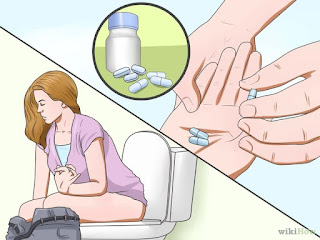ESCHERICHIA SPECIES
ESCHERICHIA
Define Escherichia
A
Gram negative rod .
List the species of Escherichia
- Esherichia coli
- Escherichia blattee
- Escherichia fergusonii
- Escherichia vulneris
- Escherichia hermanii
Mention the species of medical importance
- Esherichia coli
- Describe the normal habitat Esherichia coli
— It forms the normal flora of
the intestinal tract of humans and animals.
— They are also found in
water,soil and vegetation
Describe the morphology Esherichia
coli
- Gram –ve rods.
- Motile with peritrichous
flagella
- Non- sporing
- Some strains are
capsulated
- Measures about 2-3um in
length and 0.3um in width
Describe the mode of transmission and pathogenicity of Esherichia coli
Esherichia coli is
transmitted :-
- By ingestion of contaminated food or water.
PATHOGENICITY-
Esherichia coli causes:-
•
Causes infections in human and animals.
•
The infections are:-
–
Gastroenteritis
–
Urinary tract infections(Cystitis,pyelonephritis)
–
Appedicitis
–
Gall bladder infection
–
Bcteraemia
–
Menigitis of the new born.
–
Pyogenic infections(wound infections)
–
Septicaemia
–
Diarrhoae in infant and adult(ETEC)
Explain
the strains of Esherichia
coli
There are 5 strains(groups) of
E.coli that causes diarrheal diseases:-
·
Entero toxigenic E.coli(ETEC)
Ø Causes watery diarrhea in
infants and young children. They cause travelers diarrhea.
Ø They produce Enterotoxins of
two types i.e -Heat stable toxins(non antigenic
-Heat labile toxin(antigenic)
Ø Both toxins inhibit active
intestinal absorption and stimulate secretion of water and electrolyte in to
the lumen. This is enhanced by Adenyl Cylase enzyme known as CAMP.
·
Enteropathogenic E.coli(EPEC)
Ø It causes out break of
infantile diarrhea(infant).
Ø They can cause severe
Diarrhoea in adult
·
Entero invasive E.coli(EIEC)
Ø This strain resemble Shigella
in their biochemical reactions.
Ø It invades the mucosal of small
intestines(ileum) and colon and cause dysentery.
Ø Specimen contains blood,pus
and mucus
OTHERS
·
Enterohaemorrhagic E.coli(EHEC)
·
Verocytogenic E.coli(VCEC)
Describe the laboratory diagnosis Esherichia coli
1.SPECIMENS
- Stool
- urine
- pus
URINE
- Inoculate in CLED media.
- Incubate for 18-24
hrs AT 370C.
- Check for yellow shiny
colonies(LF)
PUS
- Inoculate on BA and MACC.
- Incubate for 18-24
hrs AT 370C.
- Check for B-hemolytic colonies that
are 1-2mm in diameter and are also shiny and cream
MACCONKEY AGAR
- Incubate 18- 24 hrs at 370c.
- Check for pink colonies
,2-3 mm in diameter.(LF)
2.CULTURE
CHARACTERISTICS
i)MACCONKEY AGAR
- Pink/rossy pink colconies
are seen.
- The colonies are large
2-3mm in diameter.
- The colonies are
translucent.
ii)CLED
- Large yellow colonies are
produced(LF)
- They measure 2-3mm in
diameter.
iii)BLOOD AGAR
- Pale yellow beta
haemolytic colonies are produced.
iv)NUTRIENT AGAR
- Smooth,colourless
colonies which are easly emulsified are seen.
- .
3.BIOCHEMICAL
TESTS
FOR Esherichia
coli:-Perform Biochemical tests to identify the organisms
Perform the following tests
for E.coli:-
- Indole
+ve
- MR
+ve
- Motility +ve
- Citrate -ve
- Ferments-glucose,lactose,fructose,mannitol,
- Maltose
and inositol is not fermented
- ONPG +ve
- TSI- A/A+ gas no H2s
- urease
–ve
- VP
-Ve
SUMMARY OF BIOCHEMICAL TESTS REACTION
- I-indole= +VE
- M-methyred=
+VE
- V-voges
prousker= -VE
- C-Citrate=
-VE
- O-ONPG=
+VE
4.PREVENTION
- Seek medical treatment
- Hygiene
- Breastfeeding infants instead of using bottles
- Isolation of the infected
- Screening before admission
- Proper cooking and storage of food







Comments
Post a Comment